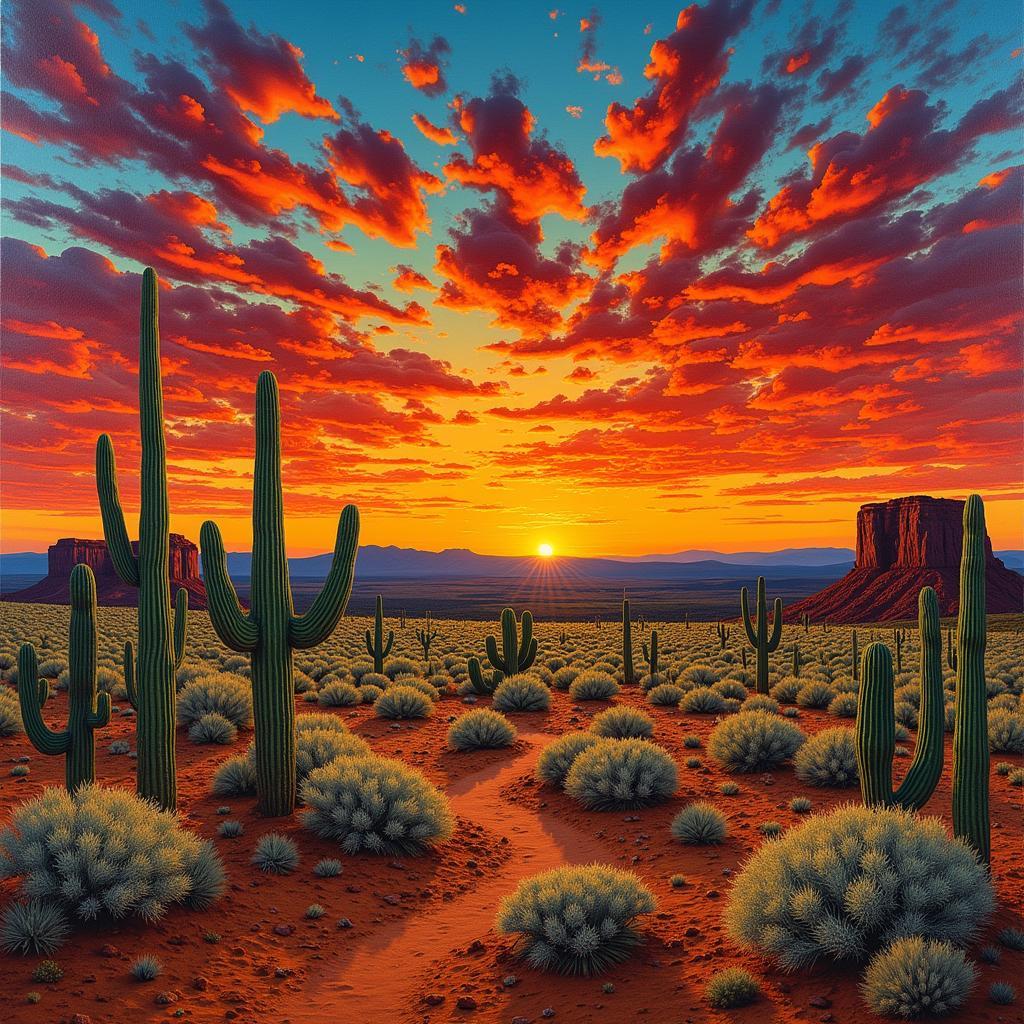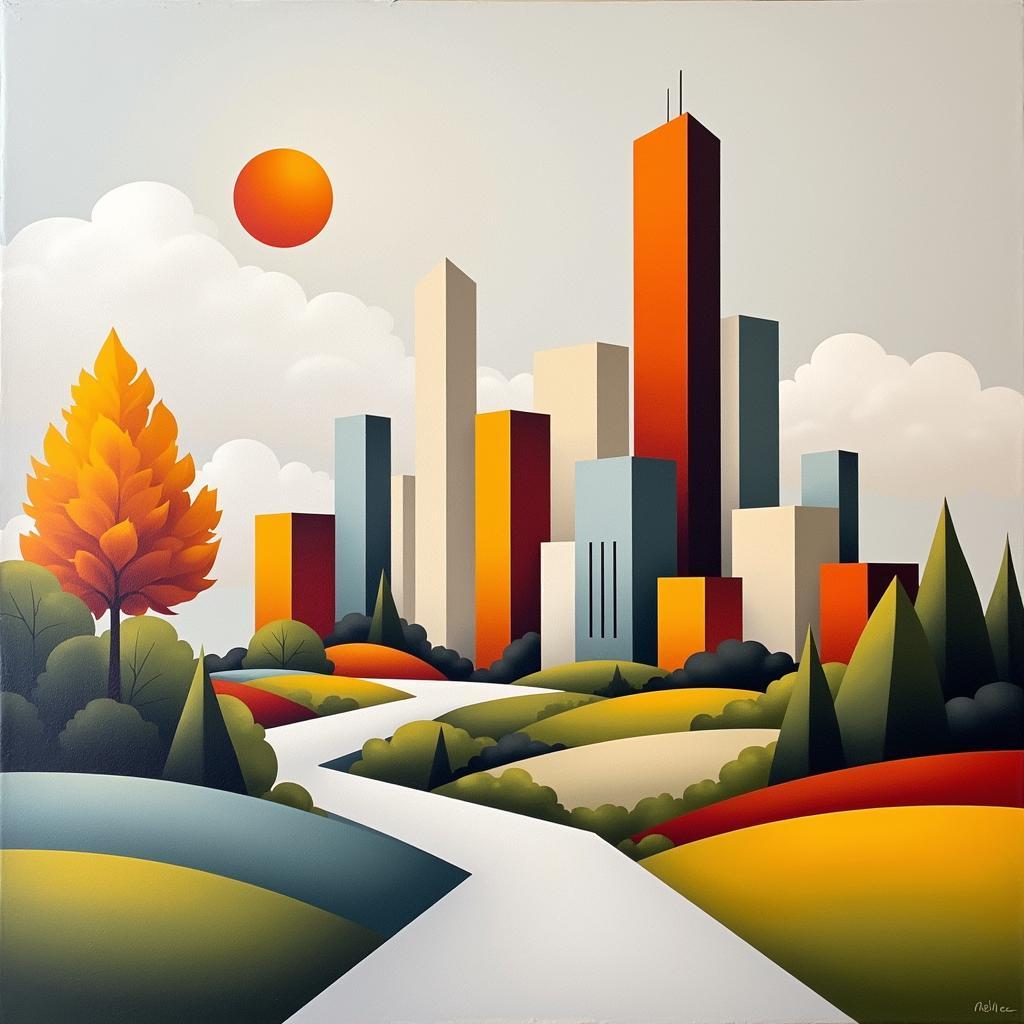Exploring the Charm of American Folk Art Landscapes
American Folk Art Landscapes offer a captivating glimpse into the hearts and minds of self-taught artists, capturing the beauty of the natural world through a unique and expressive lens. These artworks, often created by untrained individuals with a passion for depicting their surroundings, provide a fascinating perspective on American history, culture, and the individual experiences of those who lived it.
From rolling hills and verdant valleys to bustling towns and serene coastlines, American folk art landscapes encompass a diverse range of subjects and styles. Often characterized by bold colors, simplified forms, and a charming naiveté, these artworks possess an undeniable emotional resonance that continues to captivate art enthusiasts today.
A Window into American Life: Themes and Motifs in Folk Art Landscapes
More than just picturesque representations of scenery, American folk art landscapes often reveal deeper layers of meaning, reflecting the values, beliefs, and daily realities of their creators. Common themes include:
- Rural Life and Agriculture: As many folk artists resided in rural communities, farm scenes, harvests, and depictions of livestock were prevalent subjects, showcasing the importance of agriculture in their daily lives.
- Home and Family: Images of homesteads, families gathered together, and domestic scenes emphasized the significance of home, family, and community in American folk art.
- Religious Beliefs: Spiritual themes often found their way into folk art landscapes, with depictions of churches, cemeteries, and biblical scenes reflecting the strong religious convictions of many communities.
- Local Landmarks and Events: From town squares and bridges to historical events and local celebrations, folk artists documented the unique character and history of their communities through their art.
The Allure of Imperfection: Artistic Style and Techniques
Unlike formally trained artists bound by traditional conventions, folk artists often developed their own unique styles and techniques, driven by personal expression and intuition. Some defining characteristics of American folk art landscapes include:
- Simplified Forms and Perspectives: Lacking formal training in perspective or anatomy, folk artists often employed simplified forms, flattened perspectives, and a charming disregard for realism, resulting in works that are both whimsical and expressive.
- Bold Colors and Patterns: Vibrant, often unrealistic colors, and decorative patterns added a sense of joy and exuberance to folk art landscapes, showcasing the artist’s personal interpretation of their surroundings.
- Mixed Media and Found Objects: Resourcefulness was key for folk artists, who often incorporated readily available materials into their work, from house paint and scraps of fabric to found objects and repurposed materials.
Connecting with American Folk Art Landscapes Today
 Modern Folk Art Landscape Inspired by West Texas
Modern Folk Art Landscape Inspired by West Texas
The enduring appeal of American folk art landscapes lies in their ability to transport us to a different time and place, offering a glimpse into the lives and perspectives of those who came before us. These artworks remind us of the beauty to be found in simplicity, the power of personal expression, and the importance of celebrating the unique character of our communities.
Whether you’re drawn to their historical significance, artistic charm, or simply the joy they evoke, American folk art landscapes provide a captivating window into the heart of American creativity and continue to inspire artists and art enthusiasts alike.
FAQs about American Folk Art Landscapes
What makes a piece of art “folk art”?
Folk art is generally characterized by its creation by self-taught artists, often from rural communities, who lacked formal artistic training. It is often characterized by its use of traditional techniques, local materials, and a focus on themes related to everyday life, community, and cultural identity.
When was American folk art most popular?
While folk art has existed throughout history, American folk art experienced a surge in popularity during the 18th and 19th centuries, particularly in rural areas where access to formal art education was limited.
Where can I see examples of American folk art landscapes?
Many museums across the United States have collections of American folk art, including landscapes. You can find notable collections at the American Folk Art Museum in New York City, the Abby Aldrich Rockefeller Folk Art Museum in Williamsburg, Virginia, and the Museum of Fine Arts, Boston.
Are there still artists creating folk art today?
Yes, contemporary folk artists continue to draw inspiration from the traditions and aesthetics of earlier folk art, while also incorporating modern themes and materials into their work.
How can I learn more about specific folk artists or styles?
Numerous books, articles, and online resources are dedicated to American folk art. You can also contact museums, galleries, or art historians specializing in folk art for more information.
Interested in exploring other captivating art forms? Delve into the vibrant world of Latin American folk art or discover the enchanting allure of Christmas in modern art.
For any inquiries or assistance, please don’t hesitate to contact us. Our dedicated customer support team is available 24/7 to assist you.
Phone: +84 2462573573
Email: [email protected]
Visit us at:
Savico Megamall, 7-9 Đ. Nguyễn Văn Linh, Gia Thụy, Long Biên, Hà Nội 10000, Việt Nam.


